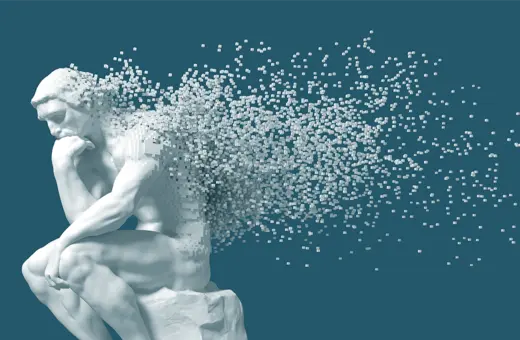Uncovering the ontology of NFTs - the artwork-cryptocurrency crossovers being sold for millions - reveals a profound uncertainty about their nature, and the rights they confer. But beyond this ambiguity, will the vast sums of cash (or cryptocurrency) being thrown at NFTs ruin the whacky and wonderful world of internet folk art? Writing originally for Aesthetics for Birds, Anthony Cross investigates.
It was the Beeple heard round the world: on Thursday, March 11th, Christie’s sold a collage of digital art images for 69 million dollars. Beeple, real name Mike Winkelmann, is the artist responsible for the work; this makes him the third-highest selling living artist behind Jeff Koons and David Hockney.
Prior to the sale, Beeple had a modest artistic practice, posting original 3D images online daily. Most of these “everydays” are technically competent but nondescript abstracts—the sort of thing that you might use as a desktop background. Recently they’ve grown more referential, including images of a breastfeeding Donald Trump, Tiger King dethroned, and the coronavirus as a scifi movie monster. How, exactly, did Beeple’s work find itself in a Christie’s auction, outselling Lucien Freud and Damien Hirst? The answer has a lot to do with his chosen format for sale: an ‘NFT’, or non-fungible token.
What’s an NFT?
The abbreviation stands for ‘non-fungible token’. NFTs are crypto tokens, just like Bitcoins and other cryptocurrency: Each NFT is a pointer to an address on a publicly verifiable and distributed blockchain. Owning an NFT means that you own the cryptographic key required to demonstrate your ownership; this can be verified by consulting the blockchain, which lists you—or more precisely your digital wallet—as the owner.
The person who holds the NFT is the owner. It’s like possessing a digital deed to the object in question.
Most crypto tokens are fungible - any bitcoin can be exchanged for any other - but NFTs are unique. This means that NFTs can be used as identifiers for unique objects. More importantly, by attaching an NFT to a particular object—like basketball highlights, digital albums or even tweets—sellers can use NFTs to transfer ownership of these objects. The person who holds the NFT is the owner. It’s like possessing a digital deed to the object in question.
NFTs are especially useful for selling digital art. By linking digital art pieces to specific NFTs, artists have created opportunities for the individual ownership and collection of objects that were otherwise replicable, shareable, and ownerless (think of internet memes). Consider the example of Nyancat, a GIF image-turned-meme dating from 2011 featuring an 8-bit cat with a Pop Tart body: this GIF has been circulating throughout the internet for a decade, featuring most prominently in an insanely catchy YouTube video set to music. The creator of the original GIF, Chris Torres, recently sold an NFT linked to a one-of-a-kind version of Nyancat for roughly $600,000.
There are interesting—and difficult—philosophical questions to be considered here. I will pose a few of them in order start a real discussion about NFTs within the philosophy of art.
NFTs and the Ontology of Art
What, exactly, is the ontological status of an NFT in relation to the work linked to it? And how might the issuance of an NFT change or update digital artworks like Nyancat, which are already in existence, and have already been widely shared and copied?















Join the conversation